Except for being right all the time, nothing in this world is better than successfully fishing a BWO dun cycle.
Don’t you just love it? A serious hatch is building up. A super hatch! The river is virtually overcrowded with tiny olives. Fish are rising steadily. Confidence builds, and you carefully approach the the bank and immediately spot her. The trout. Not just the ordinary frying pan sized dish, but a beautifully speckled golden brown hog.
At first the heart beats faster, but soon you step into a quiet and calm bubble: The state where sound is silenced, the sight is narrowed by mental blinders and you enter into the tunnel where nothing can come between you and the majestic brownie steadily rising to every other little olive sailing at full mast down the river.
If you’re old as I am, you will not have a fancy hip pack to store your flies in. The aerodynamics of your body will simply not support such a fancy gadget. But you grab for the upper right pocket in the vest where those premium no hackles are stored. You feel that every one of these flies are worthy of an exhibition. But good at heart, you have reserved them for these very special trout. You tie it on. Make the cast and enjoy the airy flight of the line as it lands like a feather. The well presented, perfectly mended and drag-free drift floats silently into the window. The golden prince spot they fly. Then the rise and the mouth of the brownie that now seems twice the size. You hold your breath for a split second while softly chanting “oh-Thank-You-Lord-almighty-of-the -Trout” and then make the strike.
She’s on. The trout is hooked.
At that moment everything falls in place. Filled with self confidence, joy and respect for both nature and the poor trout you realize that this situation is to damn rare. They do not happen to often. Usually at hatches like that, when several species are on and trout are feeding on Duns, you will not get away with one fly and one cast. Usually it takes tens of casts. Very often you end up with no fish at all.
No menu good enough?
Sometimes trout can get frustratingly picky. It seems that no menu is catering for their needs. These days, you can’t put a random pick from your fly box on the trout’s dinner table and think it will be eaten. No large trout got away by being stupid, you see. On those difficult days, a good presentation is just not enough. The right fly has to be on the end of the line.
The scope of an article on the BWO Dun has to be narrowed down. The Net is rich with videos and article on parachutes, Catskills and other good patterns. This third article in my BWO series is about solving those difficult situations – hatches where it’s likely that you’ll end up with scaring the shit out of the trout with false casting, hazardous wading and bad presentation. These are the moments when the Dun has to be just perfect, and your usual go-to fly doesn’t do the trick.
Facts and the University of Nature
Fly tying and fly fishing are no exact sciences (if they are sciences at all). Fly tying is the science from the Faculty of the Sixth Sense where the methodology pretty much is based on intuition and hunches. Therefore, my ideas are probably no better than others. But, they are my best ideas and they work when mayfly hatches turn difficult.
But in order to bring some defense to my ideas, I must say that the systematic studies done by Dough Swisher and Carl Richards have formed my views and is a guiding principle in my fly design. But of course, as I am approaching 50 experience and stubborness are important to my intuition. A doctoral degree at The University of Nature has given me a few perspectives no textbook can offer.
(My) Five principles for tying a BWO Dun
1: Size is king: To many are to sloppy when it comes to size. Choosing the right fly starts by choosing the right size. If you think about it. The difference between a size 12 millimeter and a 10 millimeter fly is enormous. 20 percent actually. To the picky trout size is not only relevant, it is in fact a reason to reject a fly that otherwise is well tied and proportioned. Get out on the water with an aquarium net and catch a specimen. Measure the size and the match the size with the best offer in your fly box
2: Get the shape and profile right: It’s impossible to decide if the size or the profile/shape of the fly is the most important trigger. They are probably equally fundamental in fly design. Shape means two things. First the fly has to have the right taper. For å mayfly it’s a cigar-like shape. Second the body profile (abdomen and thorax) must make a firm and lucid impression on the surface. The choosy trout must see what’s on the plate before deciding to eat it.
Therefore the ideal Dun for those discriminating trout are those without a lot fuzz under the abdomen and thorax – such as hackle. The No Hackle pattern with its deviations (Comaradun, the Hairwing, etc) is therefore the best starting point for matching the hatch.
A well tied Paradun is also good for these situations, especially if you’re fishing on riffles. A well tied Paradun has the right size, a well proportioned body and a sparse parachute hackle with no fibers breaking the surface film.
3: First impression and the wing: When the trout is deep down, looking up for dinner, the wing is the first part of the mayfly that enters the trout’s window of vision. The wing is therefore the primary trigger, and is the first impression the fish will get of the fly. More than anything the wing profile must be crisp and clear. To me, this point alone disqualifies Catskills on very difficult hatches. The Catskills are great on several situations, but on those really difficult hatches they are not optimal. Catskills mask the wing and they also make the body print in the water to fuzzy.
EXAMPLES:
4: Don’t waste time on color: It’s enough to be roughly right on color. The color of mayflies vary enormously even during the same hatch. In addition, the color changes as the fly gets older. Even in the first minutes after hatching, the adult mayfly turns darker for each second it sails down the river. Using valuable time blending the right mix on the dub is probably not efficient (even though its part of the fun).
If you’ve seen a mayfly from the same perspective as the fish, you’ll notice that the fly is covered by small bubbles creating a prism like effect around the fly. The prizm mask the color, and reduces the importance of it as a trigger. Therefore – use your energy to match size, shape and wing profile – not color. Roughly right is ok!
5: Be aware of the invisible hatch: Observe what the trout is rising to – not only what’s on the water. Very often when you’re out fishing, you have an idea what’s hatching even before you get to the river. Often you will be right, but the fish won’t rise to your idea but something smaller. These situations are called masking hatches, and occur when a larger and often more brightly colored mayfly is hatching at the same time as a darker and considerably smaller fly. For some reason trout very often prefer the smaller insect, but you don’t see it because you are keyed in on the large mayfly.
For instance, a fine Sulphur hatch (size 12) is on at the same time as a BWO hatch with dark olives (size 16). At these situations the Sulphur can be masking the BWO hatch, and you end up frustrated that the trout is ignoring your beautiful yellow imitation.
This is a situation that most of us experience because we think of every hatch as a simple hatch. If you’re lucky to experience a complex hatch – a situation where several species are hatching at the same time – you will be posed with another problem. That’s deciding which of the species the trout are taking. The only solution is to study the situation to figure out what the trout is taking, and not tie on what you think the fish should be feeding on.
Don’t forget the emerger
As a final point on on this long article, I would like to point out that very often trout prefer emergers to duns. Why? – read about that here
A selection of BWO with a great wing and body profile
Finally I have tied up some examples of good patterns that show a clear body profile and work in the most difficult of situations.
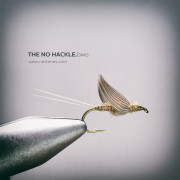
The mother of all No Hackles. Still an effective fly, although new tying materials have created better alternatives
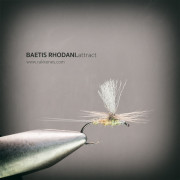
The Parachute – or Paradun as it’s originally called – is a good fly if the hackle is tied good enough. Se database for alternatives
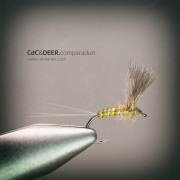
An effective biot variation of the Comparadun, where deer hair is combined with CdC
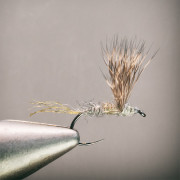
A fabulous fly and probably the best general may fly pattern that is. It’s catching fish during the entire hatch cycle.
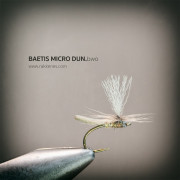
A good presentation of both wing and body on this one. Easy to tie and easy to fish
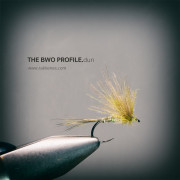
A buggy guy with a fuzzy wing, but I do find it useful – especially on clear days and on calm waters
READ THE BWO SERIES
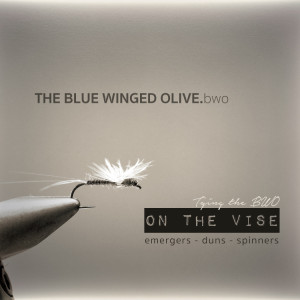 The articles in this series will dive deeper into different topics of tying the important Blue Wing Olives. Two are now available, and the rest will follow suit. They will cover the basic principles of the emerger, but probably also some alternative views on approaching the emergent state of the BWOs.
The articles in this series will dive deeper into different topics of tying the important Blue Wing Olives. Two are now available, and the rest will follow suit. They will cover the basic principles of the emerger, but probably also some alternative views on approaching the emergent state of the BWOs.
- The all important Blue Winged Olives
- The BWO Emerger
- The BWO Dun (this article)
- The BWO Spinner

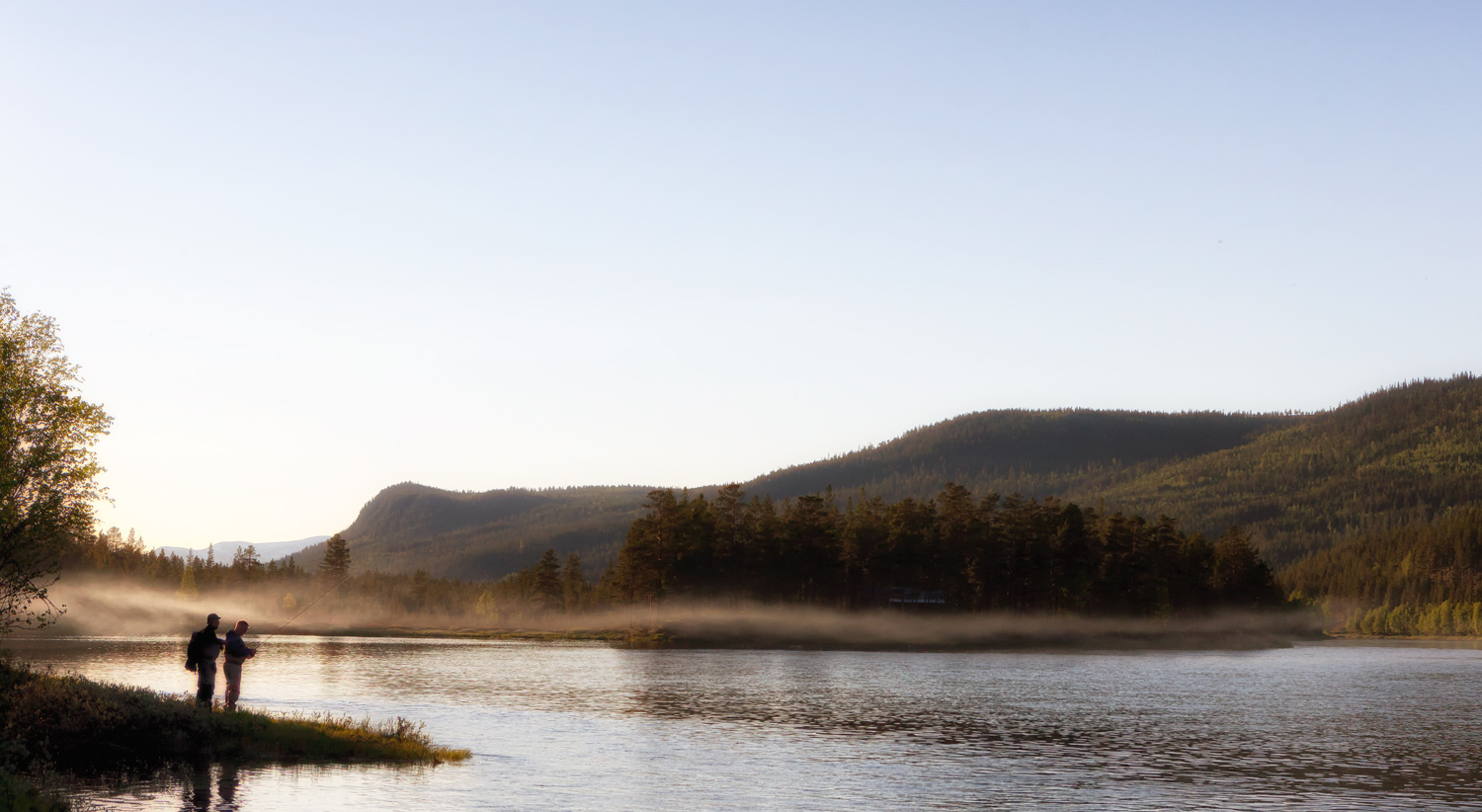
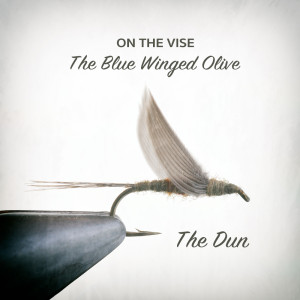
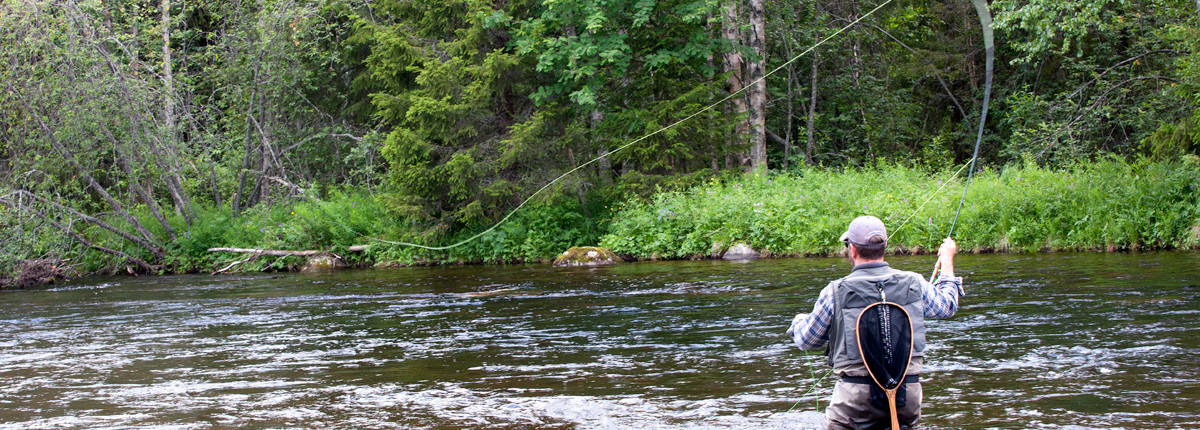
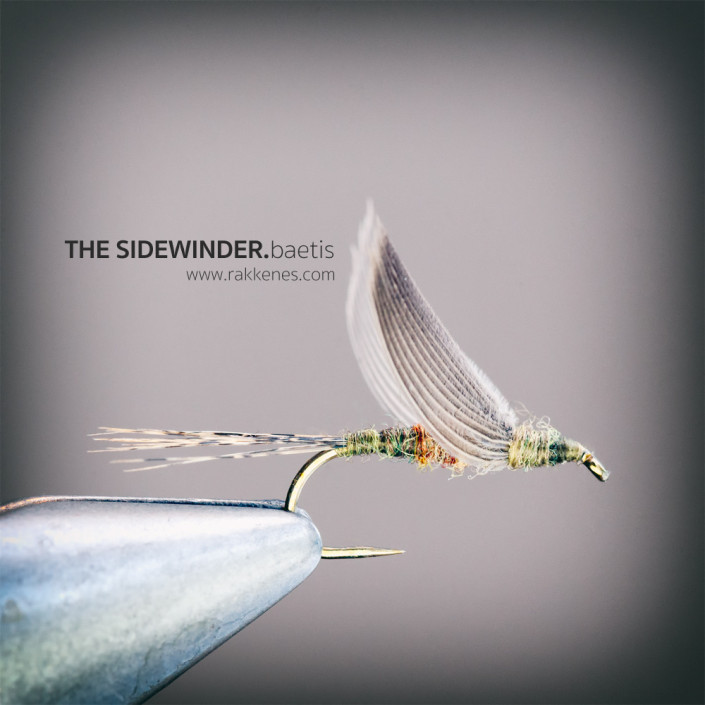
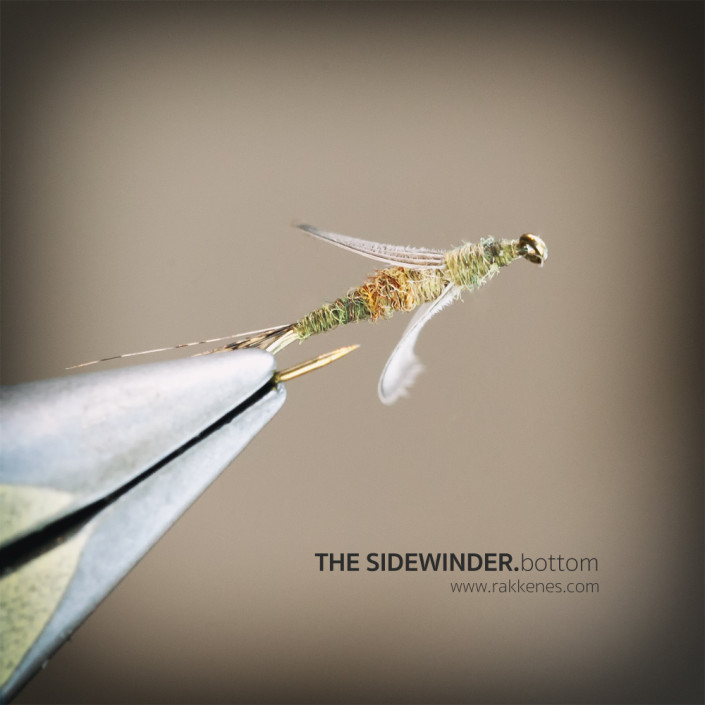
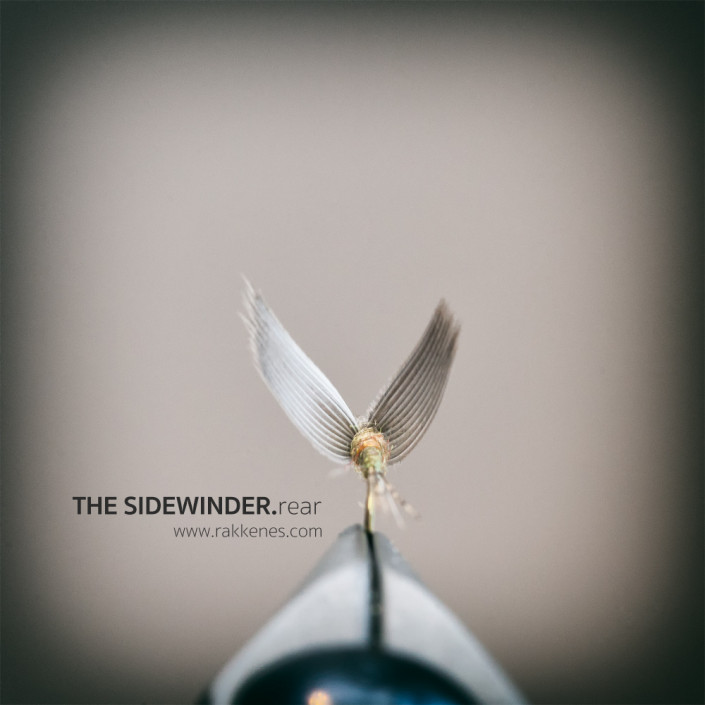
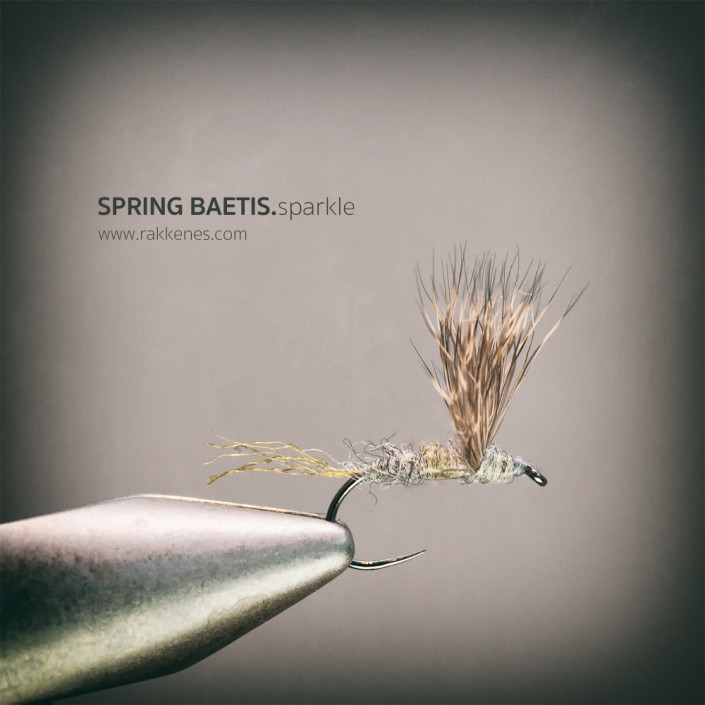
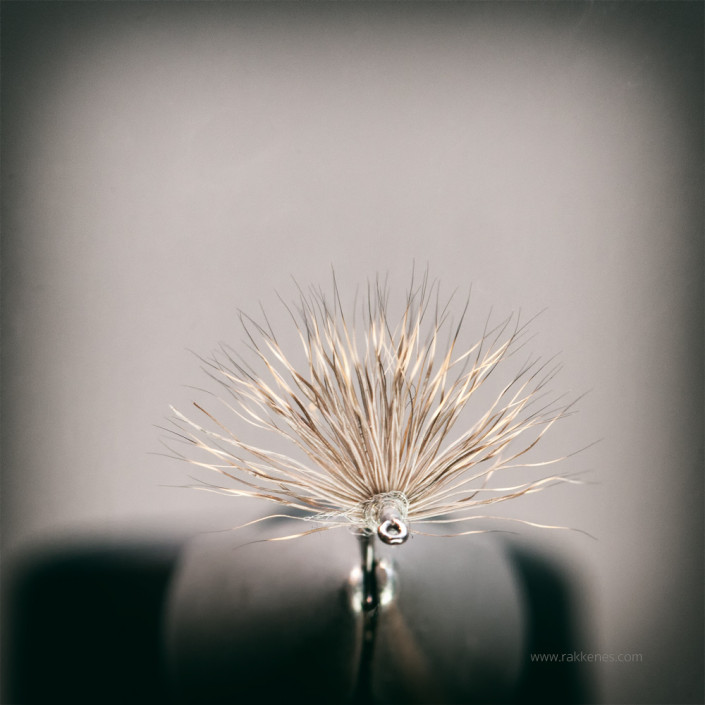
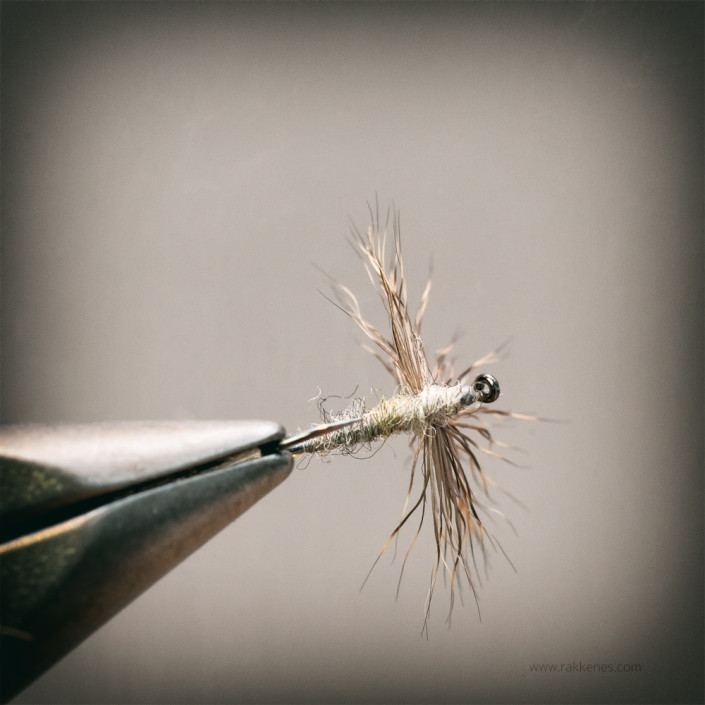


Det var ikke mye kildebruk her til å være nesten parafraserende av bøkene til Swisher/Richards. Ikke noe galt i å resirkulere velkjent stoff, men bør gjøre det litt mer tydelig. 🙂 Fin layout.
Hei “Magnus” 🙂
Takk for gode innspill, og så hyggelig at du er interessert i Swisher/Richards sine arbeider. Disse har formet mye av mitt syn på fluefiske.
Jeg skriver ikke denne siden som en vitenskapelig avhandling, men er tydelig i enhver artikkel jeg skriver hvem som fortjener credit om det skal deles ut. Det ser du i Fluebasen, og jeg prøver også å være tydelig i artiklene – uten at det skal bli tungt å lese.
Såvidt jeg kan se her er det ingen direkte referanser til Swisher/Richards, annet enn den generelle henvisning til deres betydning for mitt fiske og fluebinderi. Men siden du er på offensiven i dag, så ser jeg tre konkrete steder hvor mitt syn bygger direkte på deres:
1) Pkt 1,2) og delvis 4) “Size” and “Color”. Er et nøkkelfunn og et gjentakende poeng i både “Selective Trout” og “Fly Fishing Strategy”. Vet derfor ikke helt hva jeg skal refere til, men for eksempel kapittel 4 i sistnevnte bok gjør man et poeng av dette hvor de blant skriver “In our experience in fishing the rise, size and shape are much more important than trying to match the exact shade or color”.
2) Pkt 5 “Beware of the invisible hatch” bygger på kapittel 5 i boken “Fly Fishing strategy” diskusjonen rundt Compound Hatches. I utgaven jeg har er dette på sidene 92-95 og noe småtteri fra kapittel 5 – “Complex Hatches”
Sidetallene kan nok refere til hvilke utgaver du har. Selective Trout har jeg i førteutgaven fra 1971. Fly Fishing Strategy har jeg 1975-utgaven.
Håper dette var til god hjelp for deg. Jeg skal forsøke å være tydeligere fremover, men kommer ikke til å la slike henvisninger gå på bekostning av lesbarheten i tekstene.